 By Mark Gillies
By Mark Gillies
November 10, 2014
BURLINGTON, ON.
The first news about the loss of a soldier who lived in Burlington was a telegram from Ottawa. That telegram would have come through the railway station that the men board the train to Toronto on.
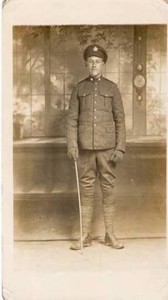
Edward Cooper Simmons
My grandfather served in that war. He wasn’t one of the of the 300 men from Burlington but he was part of that cohort that volunteered to fight in the first Great War. They believed it was the war that was going to end all wars.
Burlington was a town with a population of less than 2000; it sent more than 10% of its population off to fight a war that was on the other side of the world. everyone in town knew some of these men.
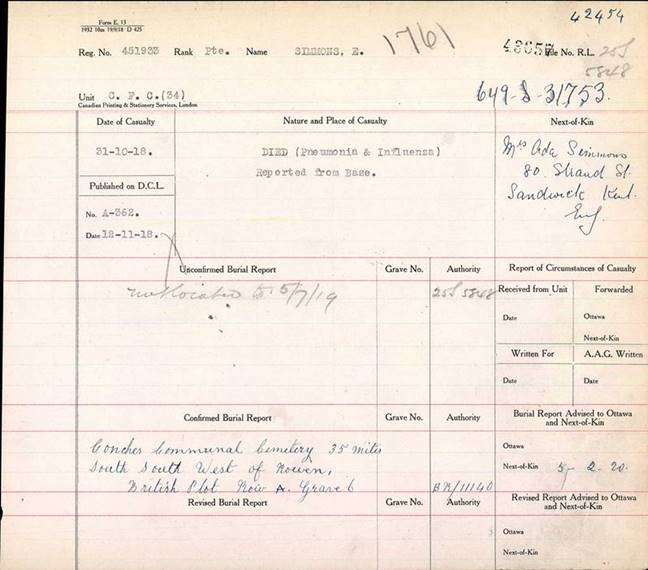
The Army Death detail document tells us Private Simmons died if influenza and pneumonia in the field. We are given the name of the cemetery his remains were laid to rest in.
One of the those men was Edward Cooper Simmons. He died in the field of influenza and pneumonia.
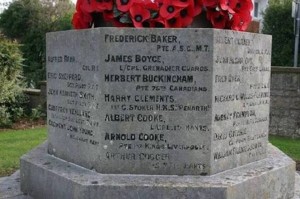
Buckingham’s name is on a small cenotaph elsewhere. Shown is a closeup of the names. There is the name of a seaman as well.
Robert John Buckingham was killed in action on May 30th, 1918 at a battle south of Sancourt. The Army death documentation says where he was buried. That is all that exists in the way of documentation but along with his name there is a tombstone with Robert John Buckingham’s name on it.

Some detail taken from the Gazette, which at the time was the newspaper for the town. Note the easy, almost colloquial style.
The Allen’s were a very prominent Burlington family. They owned a hardware store that was on Brant Street – not far from where Burlingtonians will gather on Remembrance Day. Joseph E. Allen was one of the 38 that left for the war and did not return. As a boy Joe surely walked by the place the cenotaph now stands. The short news item in the Gazette told of an injury. Allen later died of that injury.
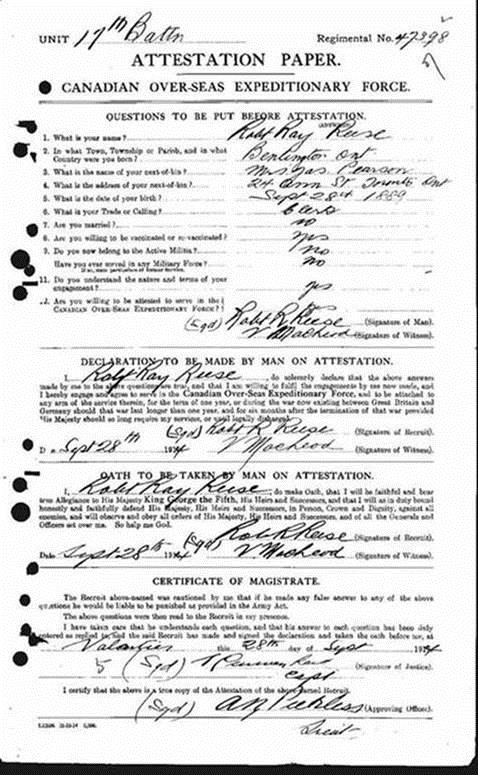
The phrase “sign-up” refers to this document which the Militia called an Attestation Paper.
Private Reese was Killed in Action in a battle at St. Julien on April 28, 1915. The documents tell us little more than that. When men enlisted they completed what was known as an Attestation form that set out the information the government needed. The department that handled all the paper work was called the Militia Department.
Robert Ray Reese was part of the Canadian Over-seas Expeditionary Force. He signed an Oath that was then signed by the local magistrate. His next of kin lived in Toronto. Reese was single. There was an Attestation form for every man that “signed-up”
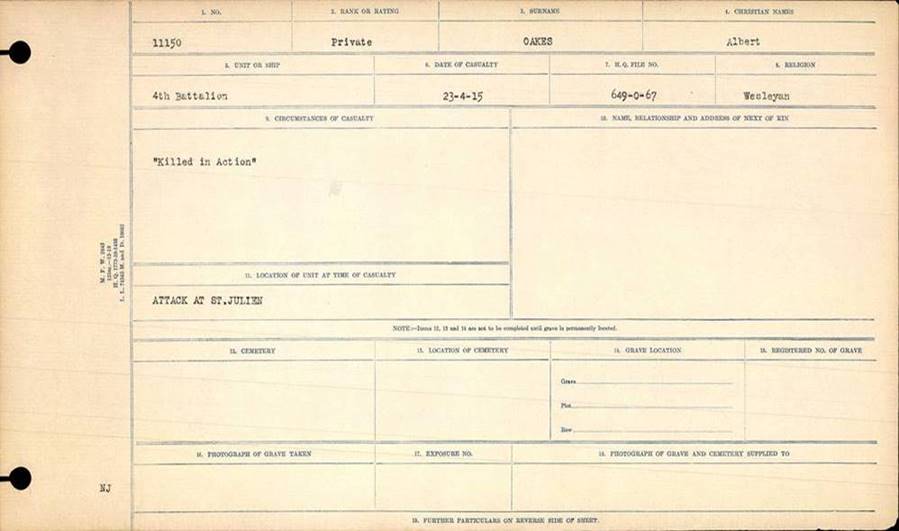
There wasn’t a lot of information available on Private Albert Oakes.
Albert Oakes died in the same action as Private Reese. The battle at St. Julien took at least two men from Burlington. They died days apart on the same battlefield. All we have in the way of records is the Army death detail document.
Harry George Bracknell was at first thought to be missing. The documentation says he was later presumed to be dead while fighting in a battle on Hill 60 in Belgium. The document was signed by General Murray Maxwell.
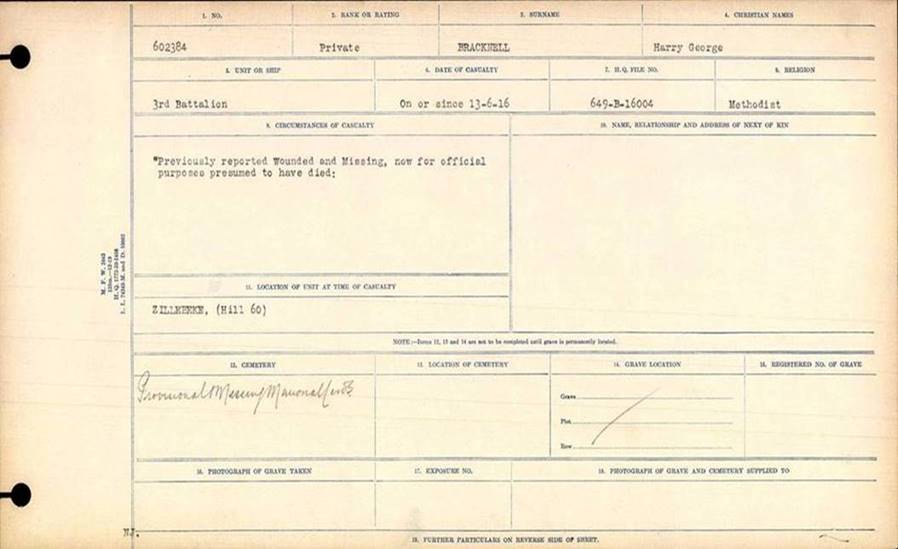
Harry George Bracknell – Very few details, missing, presumed dead.
Thousands of men were blown to piece by shells that landed close to where they were standing. There were no remains to bury – just a document saying they had been lost. All we have is a name on a cenotaph in Burlington.














